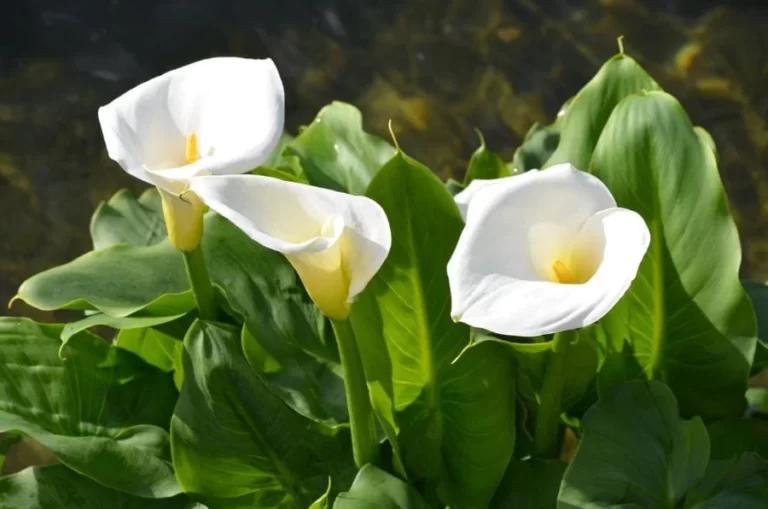Freesias are beautiful and fragrant flowers, but what do you do when the blooms fade away? Freesia bulbs need special care to ensure that they will bloom again in future years. In this article, we will explore what to do with freesia bulbs after flowering has finished.
From storing the bulbs properly to planting them in the right season – you’ll find all the answers here! Don’t let your garden become a fading memory; learn how to keep those stunning freesias coming back each year with these essential tips.
The wonderful qualities of freesia bulbs

Freesia bulbs are beautiful and versatile flowers. They have a range of colors and a sweet fragrance. The blooms are trumpet-shaped and face upward. Freesia bulbs are perfect for adding elegance to your garden or flower bed. They thrive in full sun to partial shade and are easy to grow.
They return year after year with care. These bulbs are great for cut flowers and have double blooms. There are many varieties available online. They make excellent container plants and wedding bouquets. In summary, freesia bulbs are a wonderful addition to gardening.
Where to Plant Freesia Bulbs
To grow freesia bulbs properly, choose the right location. They can be planted in flower beds or containers. Freesia bulbs need full sun to partial shade. For flower beds, pick a spot with at least 6 hours of sunlight daily.
In containers, put them in a sunny area but avoid too much direct sunlight. Freesia bulbs like well-draining soil that’s not too moist. Amend the soil with organic matter before planting. Freesia bulbs need good air circulation to prevent diseases and must be protected from high winds.
Soil Requirements for Growing Freesia Bulbs
To make sure your freesia bulbs grow well, you need good drainage in your soil. Freesia bulbs don’t like sitting in water. Use well-draining soil or add compost or peat moss for better drainage. If planting in a container, make sure it has drainage holes.
Freesia bulbs like slightly acidic soil with a pH of 6.0-6.5. You can adjust soil pH with sulfur or lime. Use slow-release fertilizer or bone meal before planting for healthy bulbs. Freesia bulbs like light, sandy, well-aerated soil. Mix in sand or perlites if your soil is heavy clay. Plant freesia bulbs in good soil for stunning blooms and fragrance.
Waterlogged Soils and Wet Conditions
Water is essential for growing plants, but too much water can be harmful. Waterlogged soils lack oxygen and can cause root rot and diseases. Harmful bacteria and fungi thrive in moist environments, causing diseases like damping-off, powdery mildew, and root rot.
Waterlogged soils can also cause leaching of essential nutrients. To avoid these problems, consider installing drainage or creating raised beds, choose plants that suit your garden’s moisture levels, add organic matter, and avoid overwatering. By taking these steps, you can create a healthy and productive garden.
How to Plant Freesia Bulbs
Planting freesia bulbs is a great way to add color and fragrance to your garden. Freesias have trumpet-shaped blooms and come in many colors. To plant them, choose a spot in your garden with at least 6 hours of sun per day and well-drained soil.
Add compost and slow-release fertilizer before planting. Plant bulbs 2-3 inches deep and 2-3 inches apart with the pointed end facing up. Keep the soil moist but not waterlogged. Fertilize every 6-8 weeks and deadhead spent blooms. To store bulbs for next year, dry them in a cool, dry place and store in a paper bag until spring. Enjoy the beauty and fragrance of freesias in your garden or as cut flowers.
Preparing the Ground and Loosening the Soil
To plant freesias, prepare the soil by loosening and adding compost or sand. Choose a location with at least 6 hours of direct sunlight. Use slow-release fertilizer to provide nutrients. Plant bulbs 2-3 inches deep and spaced apart. Water well. Enjoy beautiful, fragrant freesias with proper care.
Spacing of the Flower Bulbs in Clusters or Rows

Spacing is crucial when planting flower bulbs. It ensures healthy growth and adequate sunlight and nutrients. For clusters, space bulbs 2-3 inches apart, except for larger varieties like daffodils and tulips. Rows depend on bulb size, with small bulbs at 3-4 inches and larger ones at 6-8 inches apart.
Read planting instructions for each bulb. Proper spacing is important for both growth and visual impact. Overcrowded clusters and sparse rows can be avoided by considering spacing before planting.
Depth at Which to Plant the Corms or Seeds
When planting freesia bulbs, depth is key for healthy growth and blooming. Plant them at a depth of 2-3 inches with the pointed end facing upwards. For seeds, plant at a depth of 1/4 to 1/2 inch in well-draining soil.
Space bulbs 2-3 inches apart and adjust spacing based on bulb size. Provide full sun or partial shade and well-draining soil, and water and fertilize regularly. Follow this planting guide will lead to beautiful blooms.
Types of Fressias Available

Choose freesias for your garden for their colorful and fragrant blooms. They come in a wide variety of cultivars to suit every gardener’s taste. Double-flowered freesias have extra petals for a fuller appearance in white, pink, yellow, and purple.
Fragrant freesias have a strong and sweet aroma and come in various colors. Trumpet freesias have a distinctive shape, while upward-facing, bell-shaped blooms add a modern touch. The multi-colored freesia collection has blooms with a range of colors, from pastels to bold combinations. Freesias are a perfect way to add beauty and fragrance to your garden and home.
Double Blooming Varieties
Double-flowering freesias have extra petals, making them look fuller and more luscious than traditional freesias. They come in white, pink, purple, and yellow and are popular for weddings and events due to their romantic appearance and delicate fragrance.
The ‘Double White’ variety is perfect for bridal bouquets and centerpieces, while the ‘Double Pink’ variety adds a sweet and romantic touch. The ‘Double Purple’ variety adds a pop of color, and the ‘Double Yellow’ variety adds a bright and cheerful touch. Double-flowering freesias are a great option for adding a lush and full look to your garden or floral arrangements.
Conclusion
For a beautiful flower garden or floral arrangement, you must have freesia bulbs. They have a range of colorful and fragrant blooms that add romance and beauty to any space. Florists love double-flowering freesias because of their lush appearance and delicate fragrance, which makes them a popular choice for weddings and events.
Aley Acres and Willard and May offer free shipping on their freesia bulb collections, making it easy and affordable to add these beautiful blooms to your garden. Freesias are great container plants that can bright up your patio or deck with their trumpet-shaped upward-facing, bell-shaped blooms. So if you want to add a pop of color to your garden or plan a late-spring wedding, consider the versatile and beautiful freesia bulb.






